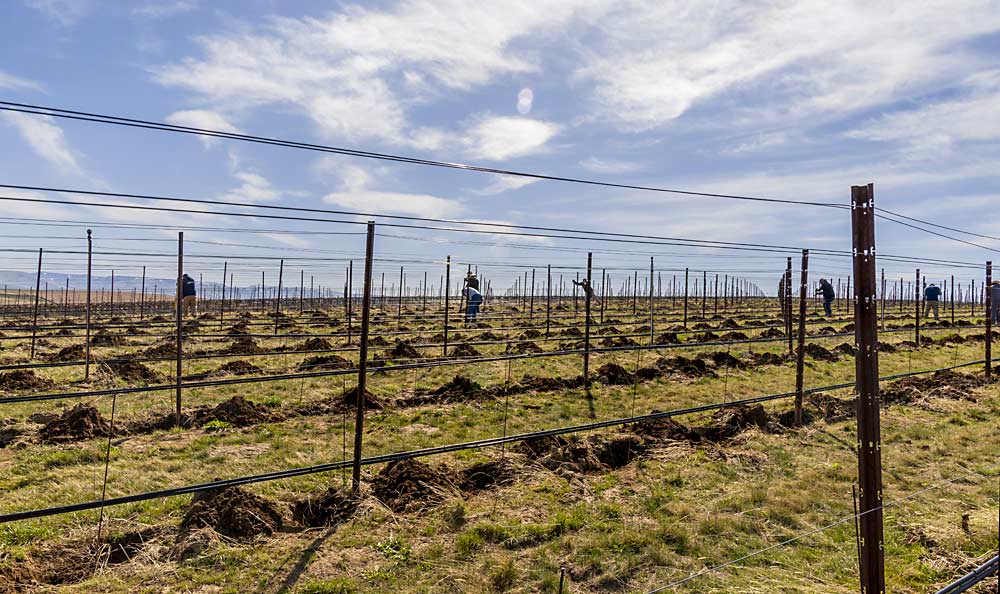
One of the first vineyards to raise the alarm about phylloxera in Washington is now sharing its aggressive approach to replanting, in hopes that it can help others facing declines due to the newfound presence of the root pest across the region.
“We would not have replanted if not for phylloxera,” said Marty Clubb, owner of L’Ecole No. 41 winery and Ferguson Vineyard in the Walla Walla Valley American Viticultural Area. After harvesting just 1 ton per acre in 2020 in the declining block, he and his vineyard manager, Sadie Drury, made the decision to pull the vines and replant on phylloxera-resistant rootstock.
It’s the first step in a complex, 10-year replanting plan Clubb and Drury developed for the 40-acre vineyard. Clubb shared his approach with Good Fruit Grower to potentially aid other growers who may be grappling with phylloxera.
“I hate to say it, but there’s still a lot of people with their head in the sand right now,” Clubb said.

Washington’s sandy soils were long believed to be poor habitat for phylloxera, a root pest that reduces vine health over time, so almost all the state’s vineyards were planted on their own roots, unlike the phylloxera-resistant rootstocks that are commonplace in most other major wine regions. So, Clubb said he never suspected phylloxera was the cause of a poor-performing spot at Ferguson Vineyard, located in the SeVein Vineyards complex on a ridge above the Oregon side of the Walla Walla Valley.
But puzzled by the persistent problem spot, Drury decided to look for phylloxera in the summer of 2019. News of the detection traveled quickly, and soon more growers across Washington decided to look for, and found, signs of phylloxera feeding in poor-performing areas. It’s not that the pest suddenly appeared, stressed Washington State University viticulture extension specialist Michelle Moyer, it’s that people started looking. While Walla Walla was the first area to raise the alarm, the widespread nature of detections since then suggest that phylloxera had been flying under the radar in vineyards across the state for a long time.
Some sites — those with very sandy soils — do seem to keep phylloxera populations in check, but many vineyards sit in silt loam soils that phylloxera like just fine, she said. In addition, the microclimate growers create with irrigation and organic matter and cultivation can make vineyards more hospitable to phylloxera.
Replanting onto rootstocks is the solution, Moyer said. It’s an expensive proposition, but phylloxera move slowly and don’t impact fruit quality, so most growers have time to pace their replant.
At Ferguson Vineyard
At Ferguson, a high-stress site on basalt rock with wind exposure, Clubb and Drury knew they needed to get to replanting right away. One block they planted in 2019, just before the phylloxera discovery, was pulled immediately.
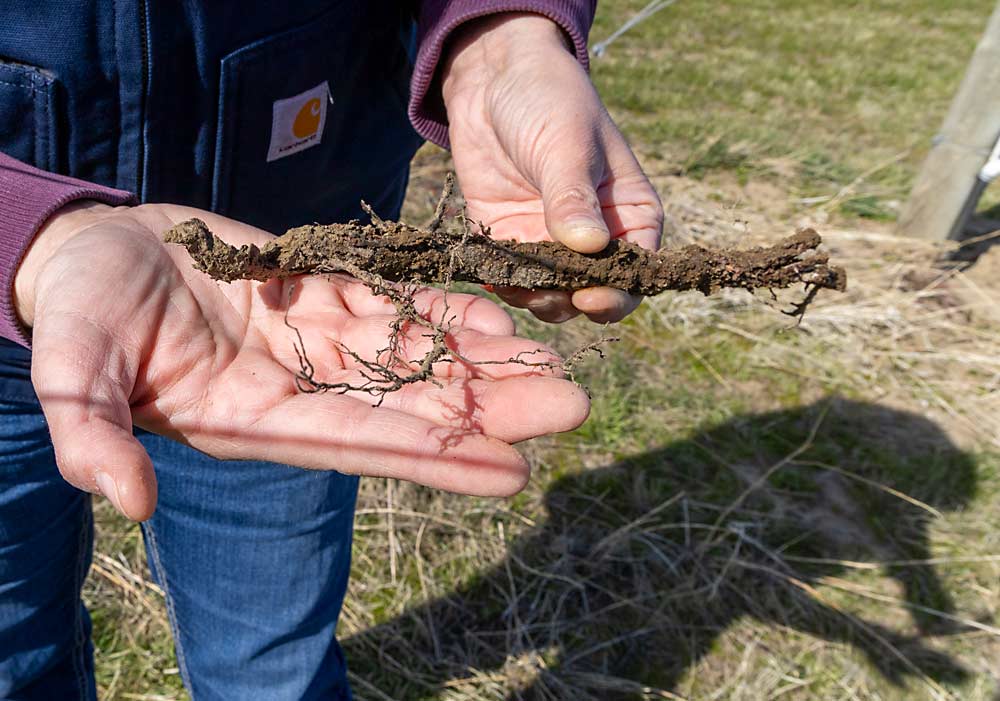
From there, Clubb had a planning problem. While L’Ecole No. 41 sources grapes from vineyards across the state, Ferguson produces grapes for his estate wines. Replanting the only block of Petit Verdot is a problem when it’s a key, albeit small, part of your signature red blend.
“The goal for me was to make sure we have the grapes for the wines I make,” Clubb said.
He built a replanting plan around the winery’s needs, looping in Drury to plan the plantings and the vineyard’s budget. It started like a puzzle: A chart spells out each block’s production over the next 10 years, some older blocks declining due to phylloxera while new plantings slowly come into production. Then, the expected production for each variety is totaled for each season, and the replanting dates and priorities shifted until the puzzle resulted in a plan that would produce enough grapes for the Ferguson label wines every year.
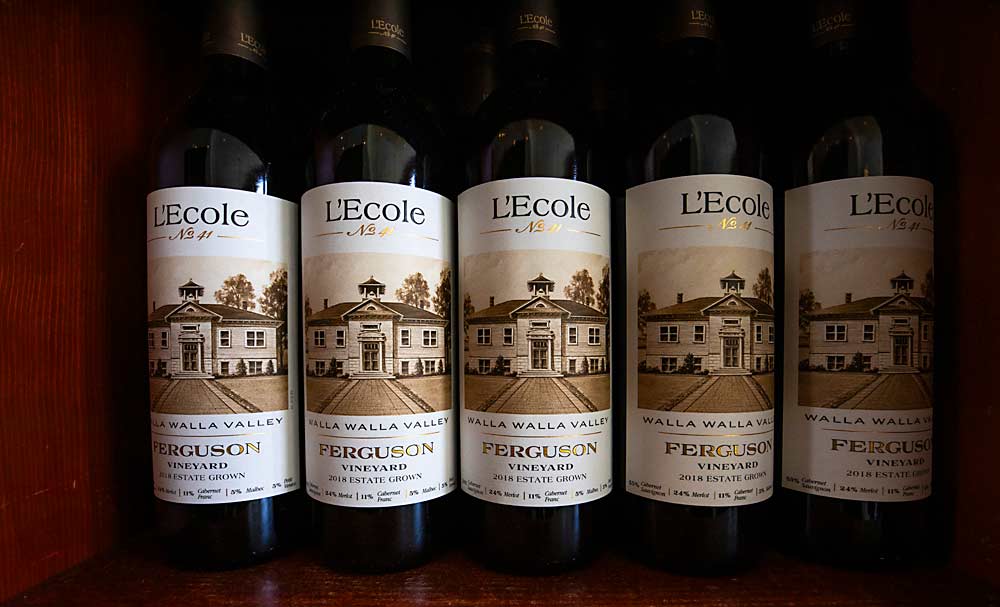
By replanting 5 acres a year, it will be fully on rootstocks in eight years, Clubb said.
“It chews up a decade’s worth of the vineyard’s profitability,” he said. “But I have the luxury of an estate vineyard supported by the winery. It’s a bleaker picture for growers.”
But he also said Ferguson might be a worst-case example of the threat phylloxera poses, because it was already a high-stress site. Another vineyard he co-owns, Seven Hills Vineyard, also has signs of phylloxera feeding, but the vines are all still producing great quality grapes. That site has deeper soils and less stressed vines and is more amenable to nutrition and other management changes to keep the vines performing well despite root-feeding pressure.
Drury now makes maps each season where she estimates which blocks are showing decline, and at what level, along with which blocks have detections but no decline and which blocks remain unimpacted, so that replanting plans can be adjusted to reflect production needs.
“Phylloxera is here and causing some damage, but not a lot,” she said of the SeVein area. “Most of the vineyards I work with are planning to do the replant a little at a time.”
On rootstocks
Drury started replanting in early 2021. She selected several well-known rootstocks — those with a little more vigor, such as 3309 Couderc, for Ferguson, and those with less vigor for Seven Hills Vineyard. At the latter site, she also planted a 3-acre rootstock trial using six different rootstocks on Clone 8 Cabernet Sauvignon.
“We’ve done as much homework as we can do. Now we need to plant and see,” she said. “I’m looking at vigor, cluster morphology, ripening and drought tolerance. It will be interesting to see how it’s changing.”
Around the Walla Walla Valley AVA, other new plantings are going in on rootstock as well.
At Les Collines Vineyard, manager Brad Sorensen planted 6 acres of Grenache on Riparia Gloire this spring. The rootstock can advance ripening, which is well-suited to Grenache. He hasn’t yet seen any sign of phylloxera in the 200-acre vineyard, but he said it was “unfortunate” that they had planted 9 acres on own-rooted vines in 2019.
“Moving forward, we’re not going to roll the dice with own-rooted,” he said. “Most of our vines are over 20 years old here, so reaching the age of replanting, (but) we have the luxury of taking our time going block by block.”
Sorensen started his career in California, so he’s familiar with growing on rootstocks, but wasn’t sure which would be best suited for Washington, especially given the winter climate. He brought in a consultant from California who helped him narrow down the choices, focusing on those with a shorter vegetative cycle to ensure they’ll harden off.
“Everything we’ve planted in the last two years is on rootstock,” said Chris Banek, owner of Banek Winegrower Management, who farms for Walla Walla- and Milton-Freewater-area wineries. “It’s more farming costs, but in the long term, we’ll produce a better crop.”
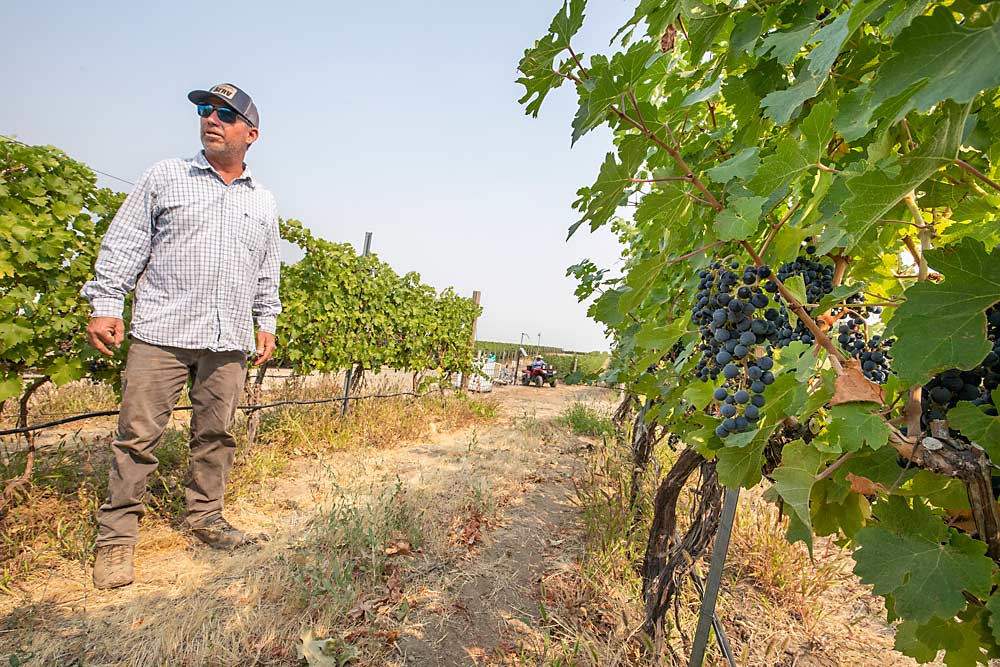
He already had experience with grafted vines in the area. He manages Octave Vineyard, which includes a rootstock trial planted over a decade ago by Jean-Francois Pellet, the winemaker at Pepper Bridge Winery. Pellet, who hails from generations of wine grape growers in Switzerland, has always said that phylloxera arriving in Washington was a matter of when, not if, and he wanted to get a head start learning about how rootstocks perform in this region.
Banek said the Cabernet Sauvignon planted on 3309C seems a bit more “youthful” than its own-rooted counterparts, and it took a little longer to hit top quality, but now he sees better production and earlier ripening.
As for the cold damage concerns, Banek said he hills up over the graft unions to protect young vines, but it’s a labor-intensive practice that can also lead to trunk damage that invites crown gall. With mature vines such as at Octave, he only hills up if there’s a serious cold event in the forecast.
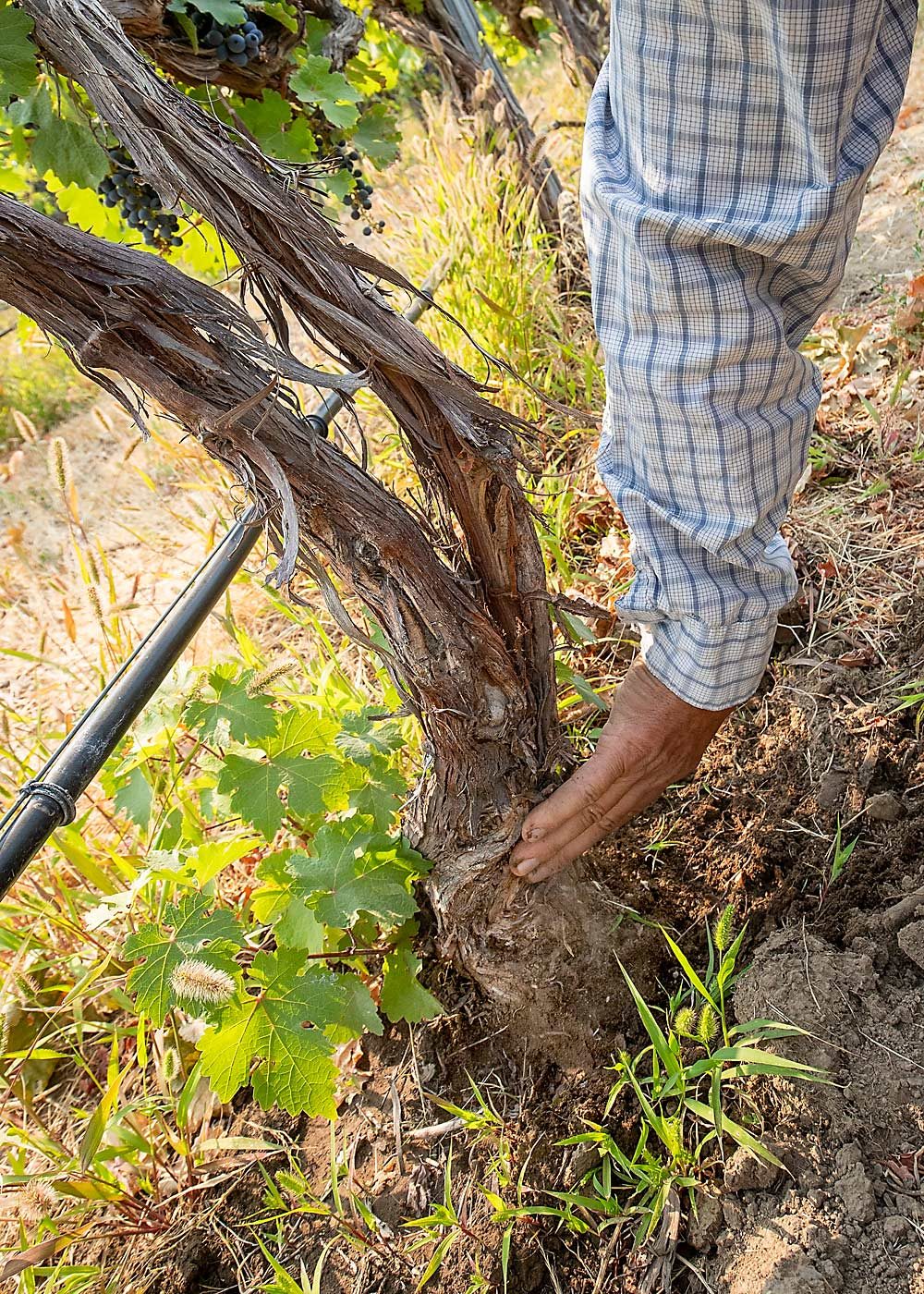
“Then, we get four tractors and get after it,” he said.
After a recent freeze, he actually found that the grafted Cabernet had a normal crop, while the adjacent own-rooted block only set fruit on tertiary buds. His theory is that the earlier ripening on the rootstock helped the vines get a head start on hardening off and better withstood the cold.
“There’s still a lot to learn,” he said.
—by Kate Prengaman

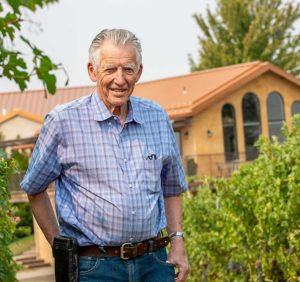
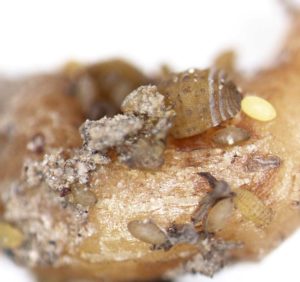
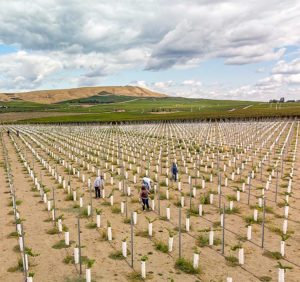
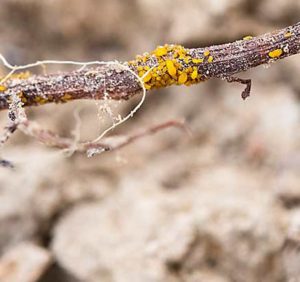
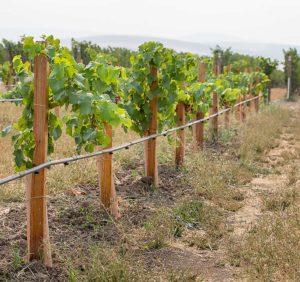





Leave A Comment